Uncategorized
Funding government without border wall appears back on table

WASHINGTON — President Donald Trump appeared to back off his demand for $5 billion to build a border wall,
The White House set the tone Tuesday when press secretary Sarah Huckabee Sanders indicated that Trump doesn’t want to shut down the government, though just last week he said he’d be “proud” to do so. The president would consider other options and the administration was looking at ways to find the money elsewhere, Sanders said.
It was a turnaround after days of impasse. Without a resolution, more than 800,000 government workers could be furloughed or sent to work without pay beginning at midnight Friday, disrupting government operations days before Christmas.
One option that has been circulating on Capitol Hill would be to simply approve government funding at existing levels, without a boost for the border, as a stopgap measure to kick the issue into the new Congress next month. The chairman of the Appropriations Committee, Sen. Richard Shelby, R-Ala., confirmed late Tuesday his office was preparing legislation to keep government funded, likely into February. The White House preference was for a longer-term package, although the conversation remained fluid and Trump has been known to quickly change course, said a person familiar with the negotiations but not authorized to discuss them by name.
“We want to know what can pass,” Sanders said at a press briefing. “Once they make a decision and they put something on the table, we’ll make a determination on whether we’ll move forward.”
She also said the president “has asked every agency to look and see if they have money that can be used.”
The turn of events kick-started negotiations that had been almost nonexistent since last week’s televised meeting at the White House, when Trump neither accepted nor rejected the Democrats’ offer. They had proposed keeping funding at current levels of $1.3 billion for border security fencing and other improvements, but not for the wall.
The Senate’s top Republican and Democratic leaders began negotiating new proposals and talks were expected to continue.
Senate Majority Leader Mitch McConnell said he was confident there would not be a government shutdown. McConnell said a stopgap measure could be approved, though he suggested that House Minority Leader Nancy Pelosi, who is poised to become House speaker when the Democrats take control Jan. 3, would not want to saddle the new year with a budget brawl.
“If I were in her shoes, I would rather not be dealing with this year’s business next year,” McConnell said.
Pelosi and Senate Minority Leader Chuck Schumer have made it clear they are not interested in funding Trump’s border wall.
During a meeting earlier Tuesday on Capitol Hill, McConnell had proposed $1.6 billion for border fencing, as outlined in a bipartisan Senate bill, plus an additional $1 billion that Trump could use on the border, according to a senior Democratic aide unauthorized to speak about the private meeting.
Democratic leaders immediately spurned the proposal. Schumer called McConnell to reject it.
“We cannot accept the offer they made of a billion-dollar slush fund for the president to implement his very wrong immigration policies,” Pelosi told reporters. “So that won’t happen.”
Democrats also rejected the administration’s idea of shifting money from other accounts to pay for Trump’s wall. Schumer said there will be no wall money, “plain and simple.”
Pelosi will probably be able to quickly approve a longer-term measure to keep government running in the new year. She called it a “good sign” that the White House appeared to be backing off its demands.
The White House showed its willingness to budge as it became apparent the president does not have support in Congress for funding the wall at the $5 billion level. Sanders said Tuesday there are “other ways” to secure the funding.
“At the end of the day, we don’t want to shut down the government,” Sanders said on Fox News Channel. “We want to shut down the border from illegal immigration.”
Sanders pointed to the Senate’s bipartisan appropriation measure for the Department of Homeland Security, which provides $26 billion, including $1.6 billion for fencing and other barriers. It was approved by the committee in summer on a bipartisan vote.
“That’s something that we would be able to support,” she said, as long as it’s coupled with other funding.
But House Democrats largely reject the Senate’s bill because it includes 65 miles of additional fencing along the Rio Grande Valley in Texas.
Trump had campaigned on the promise that Mexico would pay for the wall. Mexico has refused.
It’s unclear how many House Republicans, with just a few weeks left in the majority before relinquishing power to House Democrats, will even show up midweek for possible votes. Many Republicans say it’s up to Trump and Democrats to cut a deal.
The standoff dispute could affect nine of 15 Cabinet-level departments and dozens of agencies, including the departments of Homeland Security, Transportation, Interior, Agriculture, State and Justice, as well as national parks and forests.
Shelby expected the stopgap measure, which would cover the seven appropriation bills for those departments, would pass. “Who would want to shut the government down?” he said.
Congress did pass legislation to fund much of the government through the fiscal year, until Oct. 1. But a partial shutdown would occur at midnight Friday on the remaining one-fourth of the government.
About half the workers would be forced to continue working without immediate pay. Others would be sent home. Congress often approves their pay retroactively, even if they were ordered to stay home.
Many agencies, including the Pentagon and the departments of Veterans Affairs and Health and Human Services, are already funded for the year and will continue to operate as usual. The U.S. Postal Service, busy delivering packages for the holiday season, wouldn’t be affected by any government shutdown because it’s an independent agency.
___
Associated Press writer Laurie Kellman in Washington contributed to this report.
Lisa Mascaro, Matthew Daly And Catherine Lucey, The Associated Press
Uncategorized
Kananaskis G7 meeting the right setting for U.S. and Canada to reassert energy ties


Energy security, resilience and affordability have long been protected by a continentally integrated energy sector.
The G7 summit in Kananaskis, Alberta, offers a key platform to reassert how North American energy cooperation has made the U.S. and Canada stronger, according to a joint statement from The Heritage Foundation, the foremost American conservative think tank, and MEI, a pan-Canadian research and educational policy organization.
“Energy cooperation between Canada, Mexico and the United States is vital for the Western World’s energy security,” says Diana Furchtgott-Roth, director of the Center for Energy, Climate and Environment and the Herbert and Joyce Morgan Fellow at the Heritage Foundation, and one of America’s most prominent energy experts. “Both President Trump and Prime Minister Carney share energy as a key priority for their respective administrations.
She added, “The G7 should embrace energy abundance by cooperating and committing to a rapid expansion of energy infrastructure. Members should commit to streamlined permitting, including a one-stop shop permitting and environmental review process, to unleash the capital investment necessary to make energy abundance a reality.”
North America’s energy industry is continentally integrated, benefitting from a blend of U.S. light crude oil and Mexican and Canadian heavy crude oil that keeps the continent’s refineries running smoothly.
Each day, Canada exports 2.8 million barrels of oil to the United States.
These get refined into gasoline, diesel and other higher value-added products that furnish the U.S. market with reliable and affordable energy, as well as exported to other countries, including some 780,000 barrels per day of finished products that get exported to Canada and 1.08 million barrels per day to Mexico.
A similar situation occurs with natural gas, where Canada ships 8.7 billion cubic feet of natural gas per day to the United States through a continental network of pipelines.
This gets consumed by U.S. households, as well as transformed into liquefied natural gas products, of which the United States exports 11.5 billion cubic feet per day, mostly from ports in Louisiana, Texas and Maryland.
“The abundance and complementarity of Canada and the United States’ energy resources have made both nations more prosperous and more secure in their supply,” says Daniel Dufort, president and CEO of the MEI. “Both countries stand to reduce dependence on Chinese and Russian energy by expanding their pipeline networks – the United States to the East and Canada to the West – to supply their European and Asian allies in an increasingly turbulent world.”
Under this scenario, Europe would buy more high-value light oil from the U.S., whose domestic needs would be back-stopped by lower-priced heavy oil imports from Canada, whereas Asia would consume more LNG from Canada, diminishing China and Russia’s economic and strategic leverage over it.
* * *
The MEI is an independent public policy think tank with offices in Montreal, Ottawa, and Calgary. Through its publications, media appearances, and advisory services to policymakers, the MEI stimulates public policy debate and reforms based on sound economics and entrepreneurship.
As the nation’s largest, most broadly supported conservative research and educational institution, The Heritage Foundation has been leading the American conservative movement since our founding in 1973. The Heritage Foundation reaches more than 10 million members, advocates, and concerned Americans every day with information on critical issues facing America.
Uncategorized
Poilievre on 2025 Election Interference – Carney sill hasn’t fired Liberal MP in Chinese election interference scandal
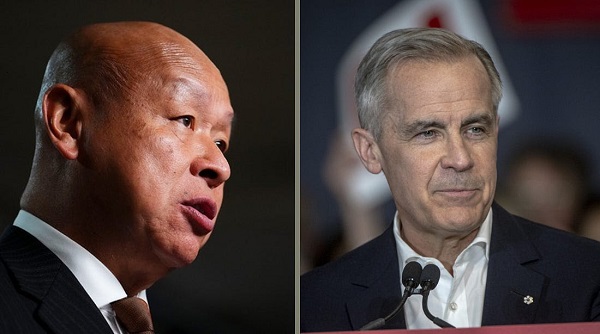
From Conservative Party Communications
“Yes. He must be disqualified. I find it incredible that Mark Carney would allow someone to run for his party that called for a Canadian citizen to be handed over to a foreign government on a bounty, a foreign government that would almost certainly execute that Canadian citizen.
“Think about that for a second. We have a Liberal MP saying that a Canadian citizen should be handed over to a foreign dictatorship to get a bounty so that that citizen could be murdered. And Mark Carney says he should stay on as a candidate. What does that say about whether Mark Carney would protect Canadians?
“Mark Carney is deeply conflicted. Just in November, he went to Beijing and secured a quarter-billion-dollar loan for his company from a state-owned Chinese bank. He’s deeply compromised, and he will never stand up for Canada against any foreign regime. It is another reason why Mr. Carney must show us all his assets, all the money he owes, all the money that his companies owe to foreign hostile regimes. And this story might not be entirely the story of the bounty, and a Liberal MP calling for a Canadian to be handed over for execution to a foreign government might not be something that the everyday Canadian can relate to because it’s so outrageous. But I ask you this, if Mark Carney would allow his Liberal MP to make a comment like this, when would he ever protect Canada or Canadians against foreign hostility?
“He has never put Canada first, and that’s why we cannot have a fourth Liberal term. After the Lost Liberal Decade, our country is a playground for foreign interference. Our economy is weaker than ever before. Our people more divided. We need a change to put Canada first with a new government that will stand up for the security and economy of our citizens and take back control of our destiny. Let’s bring it home.”
-

 conflict2 days ago
conflict2 days agoTrump dismisses US intelligence that Iran wasn’t pursuing nuclear bomb before Israeli attack
-
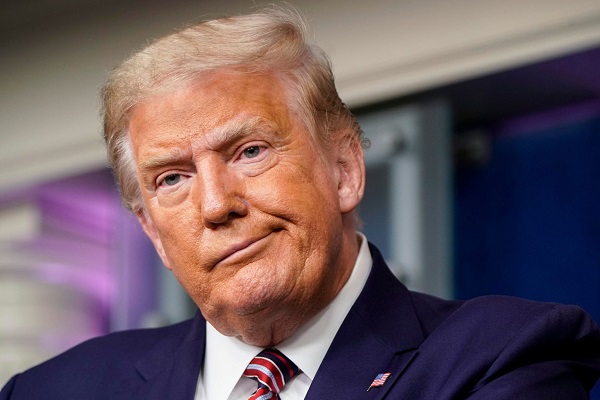
 Business2 days ago
Business2 days agoCanada’s critical minerals are key to negotiating with Trump
-
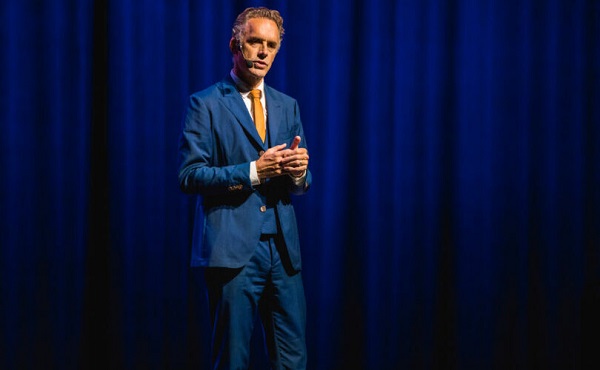
 Censorship Industrial Complex2 days ago
Censorship Industrial Complex2 days agoJordan Peterson reveals DEI ‘expert’ serving as his ‘re-education coach’ for opposing LGBT agenda
-
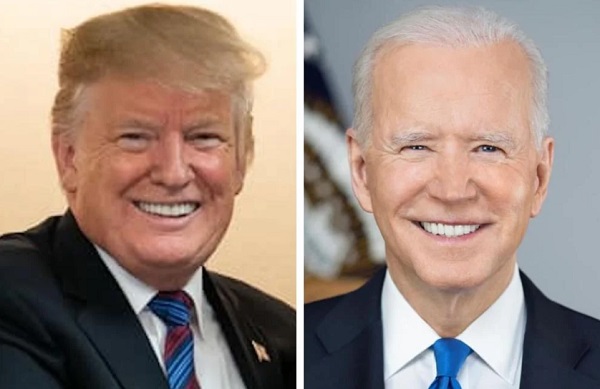
 espionage23 hours ago
espionage23 hours agoFBI Buried ‘Warning’ Intel on CCP Plot to Elect Biden Using TikTok, Fake IDs, CCP Sympathizers and PRC Students—Grassley Probes Withdrawal
-
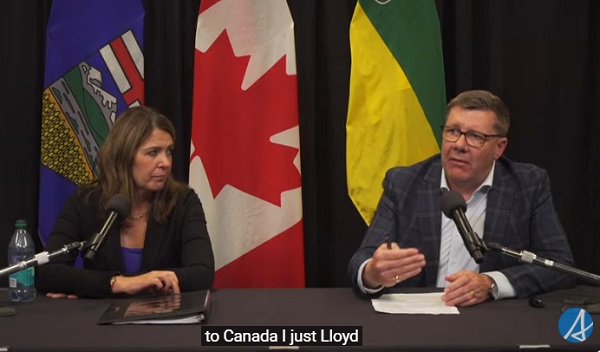
 Alberta2 days ago
Alberta2 days agoUnified message for Ottawa: Premier Danielle Smith and Premier Scott Moe call for change to federal policies
-

 David Clinton21 hours ago
David Clinton21 hours agoWhy Are Ontario’s Public Schools So Violent?
-

 Economy2 days ago
Economy2 days agoOttawa’s muddy energy policy leaves more questions than answers
-

 Business19 hours ago
Business19 hours agoSenator wants to torpedo Canada’s oil and gas industry






